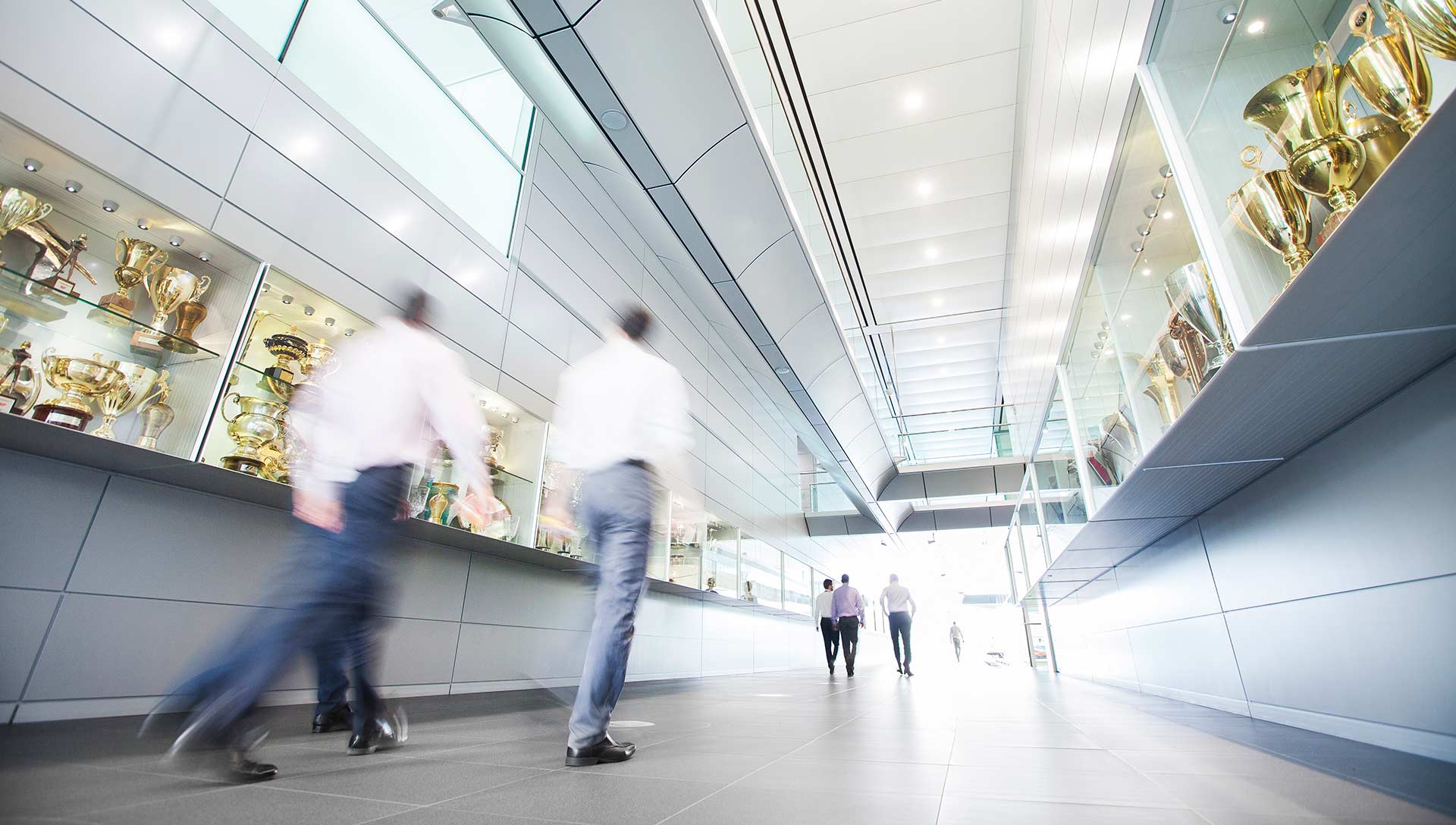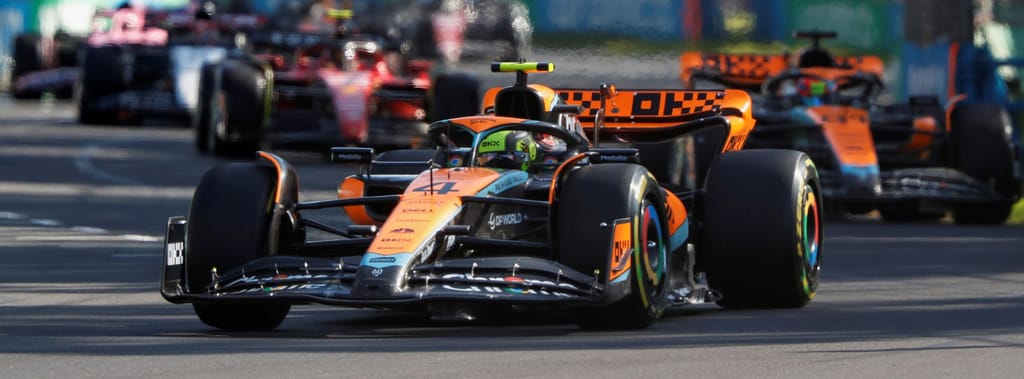
Strategy Debrief – presented by FxPro
Chaos reigned in Albert Park: here’s how we held our nerve to score double points

For most people, a grand prix finishes on Sunday: fans leaving the grandstands, or changing channel at home, the crew packing down the garage, even the drivers, after their post-race debrief. For the teams’ engineers and strategists, however, it’ll rumble on for a few days yet, with debriefs and analysis.
The 2023 Australian Grand Prix provided a dramatic third round of the season, with three Safety Cars, a VSC and three red flags (plus another after the fact). That’s a recipe for mayhem, for good decisions to have bad outcomes and for ridiculous gambles to come good…
But that wasn’t the case for us on Sunday, as we used the timings of the various incidents to our advantage, taking strategic decisions that, short of a crystal ball, were straightforward and relatively uncontentious. A great deal of collective thought went into achieving that outcome in amongst the chaos and confusion at Albert Park, and plenty of rigorous analysis will be done in the days ahead.
In association with FxPro and with exclusive insight from McLaren F1 Director of Strategy and Sporting Randy Singh, here’s how it all unfolded and the method behind the madness…
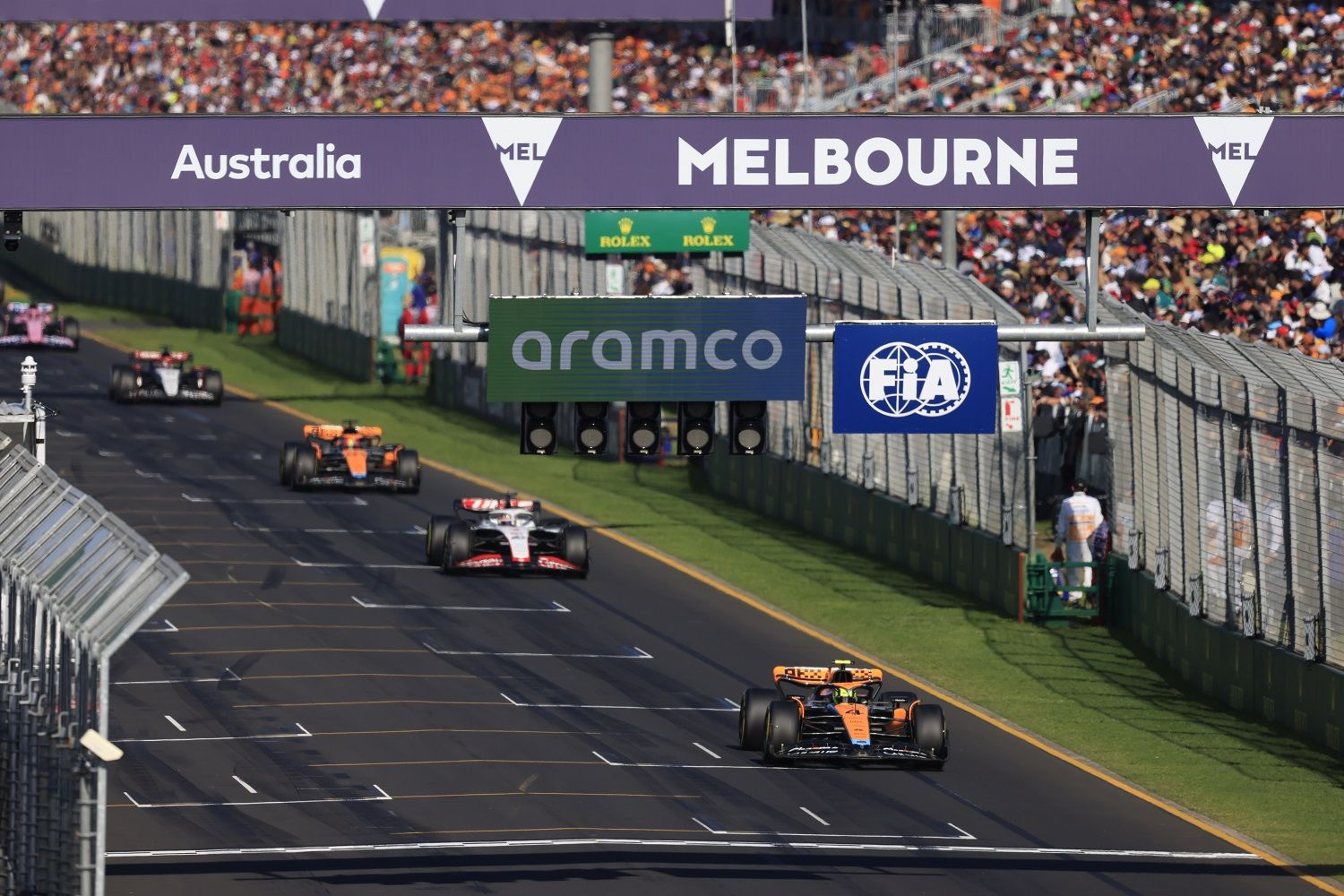
The race in a nutshell
-
Clean start for Lando P13 and Oscar P16. Both cars stay out for the opening Safety Car, rising to P11 and P13, respectively.
-
Safety Car comes out again for Albon’s crash. Both cars stay out, and when the red flag is thrown, they are P9 and P10.
-
Both cars – like the rest of the field – commit to a long, tyre-conserving stint to the flag. They are running P8 and P11 when the third Safety Car is deployed. Lando stays out, Oscar boxes without losing position. It’s rendered moot by a second red flag.
-
Both drivers survive the chaos of the restart. When the third red flag is thrown, they’re able to line up P7 and P9 for the final, processional lap of the race, finishing P6 and P8 after Sainz serves a penalty.
|
|
Lando Norris |
Oscar Piastri |
|
Starting Position |
P13 |
P16 |
|
End of First Lap |
P11 |
P13 |
|
Finishing Position |
P6 |
P8 |
|
Speed Trap |
318.7km/h (7th fastest) |
325.5km/h (1st) |
|
Pit-stop |
N/A |
19.442s (12th) |
|
Fastest Lap |
1:21.173 (9th) |
1:21.335 (12th) |
Lando’s compound strategy: New Medium > New Hard > New Soft > Used Soft
Oscar’s compound strategy: New Medium > New Hard > New Soft > New Soft > New Soft
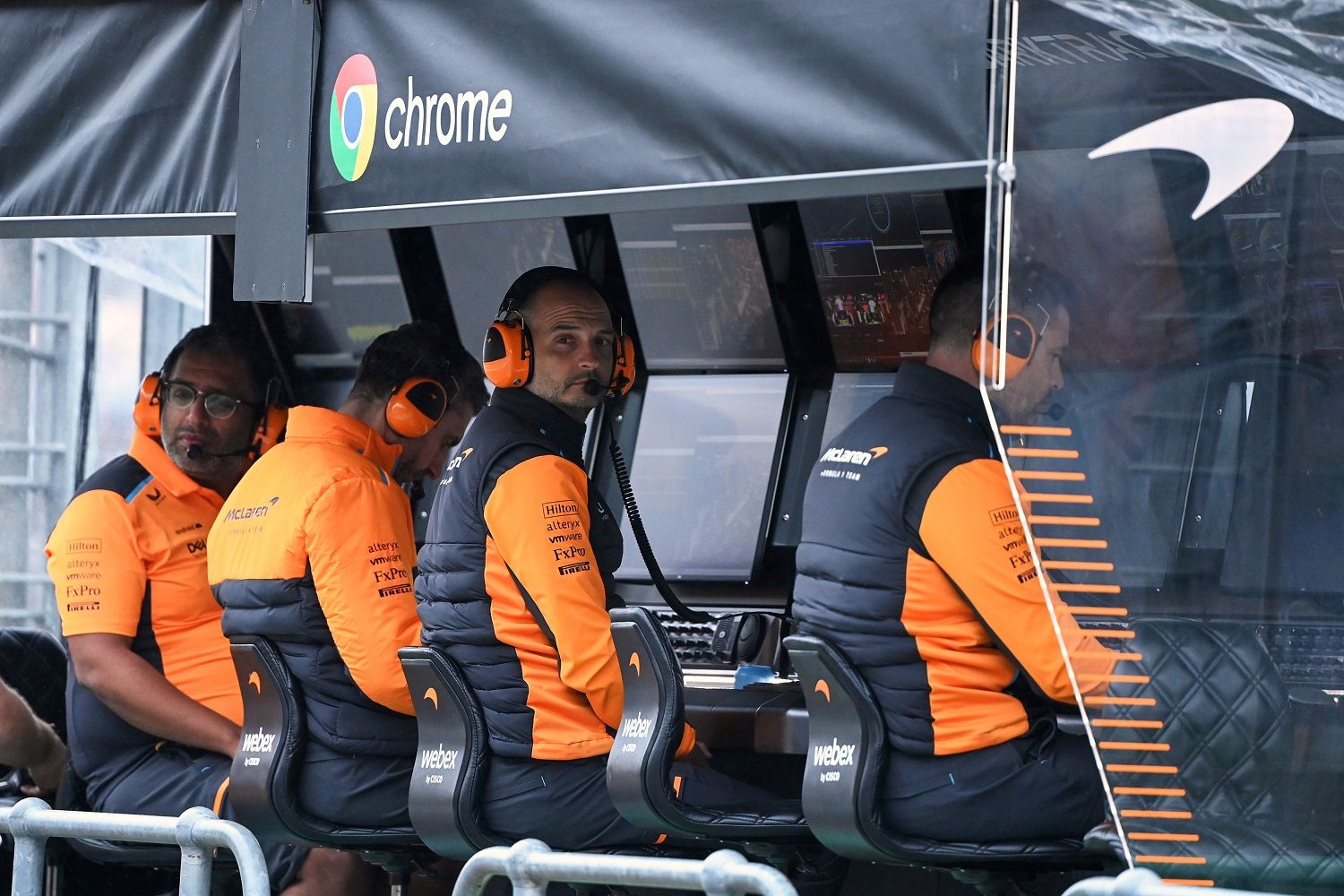
The strategy… in theory
The key points going into the Australian Grand Prix were that, despite the useful addition of the fourth DRS zone, Albert Park would be a track on which it was very difficult to overtake. On the smooth surface, the tyres were likely to degrade very slowly, though the Soft compound, despite being a step harder than 2022, was unfavoured.
Therefore, track position was critical, and the race expected to be a one-stop affair, contested for the most part on the Hard and Medium compounds, with a wide pit window, likely to be determined by position and opportunity rather than tyre life.
What really happened
The race largely followed the pre-session plan. Both drivers joined the majority of the field starting on the Medium tyre, and then switched to the Hard at the first red flag, effectively getting a free stop, planning to do a long stint to the flag on the Hard compound.
When Kevin Magnussen retired from P12, Oscar had a Safety Car pit-gap over Zhou Guanyu, and thus could take a ‘free’ stop for a Soft tyre when the Safety Car was deployed on Lap 54 – but the subsequent flag rendered that moot. Both drivers came through the restart relatively unscathed, and picked up places by virtue of others going off.
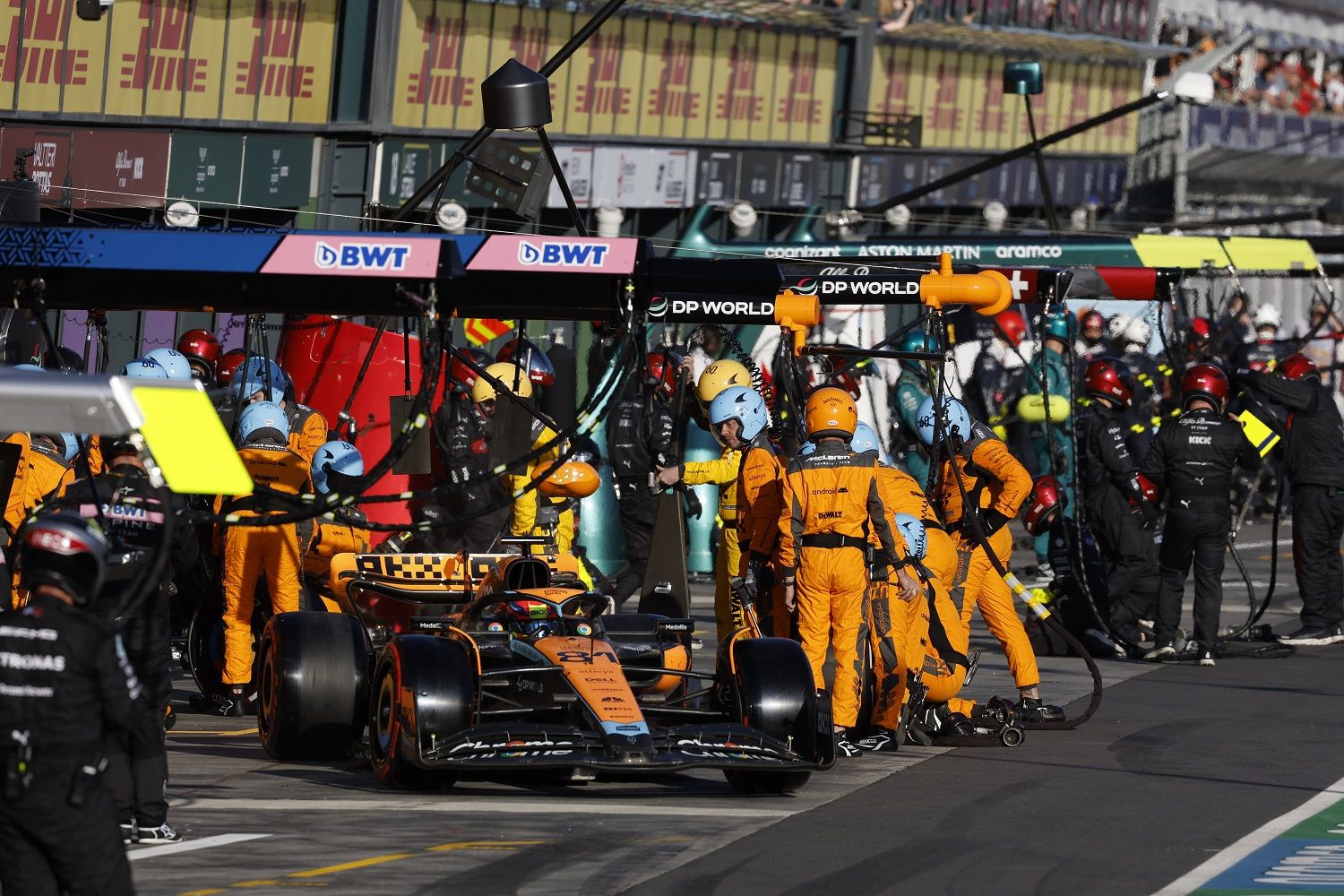
The strategy explained: Calm over chaos
The Medium tyre is generally the starting tyre of choice in a race expected to be one-stop, as it provides the maximum flexibility in the timing of the pit-stop – though the team also believed it was the right starting tyre in Albert Park for a regulation race. “We certainly considered all the options but were quite happy with the Medium,” says Randy.
“It wasn’t just about the risk of Safety Cars and red flags but also because we thought it was the right way to make gains through the race. We felt the Hard could be difficult at the start and that the Soft would grain, so that made our decision relatively straightforward.”
Several cars starting on the Medium – or Soft – compound took advantage of the first and second Safety Cars in the opening laps to pit for the Hard, intending to do nearly the whole race on that compound. While Sergio Pérez and Logan Sargeant double-stopped, swapping off and then back onto their starting Hard tyre. They were all unlucky that the red flag came out on Lap 8, effectively wiping out any potential gain.
It had, however, never been a proposition seriously entertained for Lando or Oscar. “We weren’t surprised at people pitting very early onto a Hard tyre – Alex Albon did the whole race last year on that tyre after all – but we were surprised at how many people did it,” offers Randy. “The more people try it, the less attractive it becomes, because you’re always likely to get stuck behind some of those, so it didn't make sense for us to do it.”
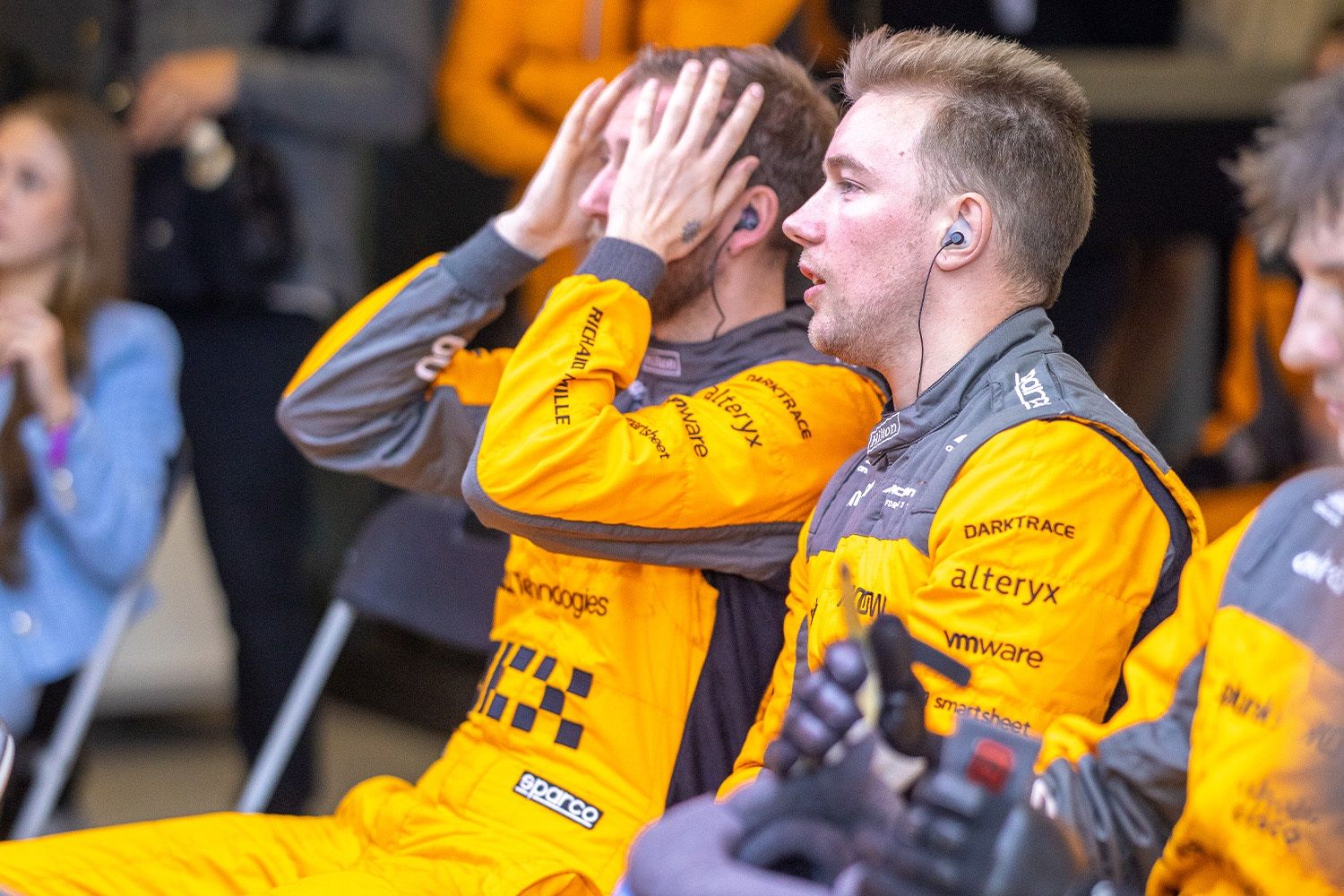
Both Lando and Oscar used the red flag to fit a Hard tyre, intending to go to the end of the race. While both were attacking and defending at various times during the long stint, the over-riding instruction was to look after the tyres, and have something left to attack with at the end of the race. “The first red flag happened late enough that we were willing to pick the Hard tyre,” says Randy. “It had been our plan to fit it at the stop anyway, so it gave us a nice opportunity to do what we wanted, without the time loss of a pit-stop.”
One conundrum for the strategy team was whether Lando should use the life in his tyres to fight a recovering Pérez. While the Red Bull is demonstrably quicker than anything else in F1 at the moment, Pérez didn’t catch Lando swiftly enough to suggest losing the position was inevitable. The team elected to allow Lando a couple of laps to defend robustly, before assessing that Pérez was too quick, and ultimately a prolonged defence would be a wasted effort. After relinquishing the position, Lando had enough left in his tyres to attack and pass Nico Hülkenberg towards the end of the race.
“We weren’t quite certain of the best option,” says Randy. “Initially, when Checo cleared the train of cars behind Lando, our thinking was that he would catch Lando quickly and it would be difficult to hold him behind for the 30-plus laps remaining. In that case, it made sense to prioritise beating some of the other cars – Hülkenberg, potentially even Gasly, Ocon behind.
“So, at that stage of the race, our thought was to not damage our tyres too much fighting him, at the expense of being in position to fight the three or four cars we’re more genuinely racing. Then as he made progress up towards Lando, it seemed like the pace difference between the two cars wasn’t as big as we expected, which gave us pause to think maybe he was a car we could hold up until the end of the race. We allowed Lando to assess the situation for a couple of laps – but our initial impression was correct, and we reverted to that plan.”

The Safety Car on Lap 54 raised the possibility of adding a pit-stop. Lando was willing to risk a stop, potentially losing position to Hülkenberg and Ocon in exchange for a new set of Soft tyres for the restart. The team rejected this, concerned that the race would either finish behind the Safety Car or be red-flagged. For Oscar, however, there was little risk in a stop, given he was out of the points in P11 and would not lose a place. When the red flag was waved, he was disappointed at a lost opportunity – but it didn’t cost him any ground.
At the restart on Lap 56, both cars were able to avoid the incidents and dodge most of the debris before returning directly to the pit-lane when the third red flag was waved. When Race Control opted to reset the order to that used for the previous restart, minus the cars that had not returned to the pit-lane. Lando was shuffled into P7 and Oscar into P9. They completed the final formation lap behind the Safety Car, moving up to P6 and P8 at the flag, when Carlos Sainz served a 5s penalty.
Ultimately, the Australian Grand Prix ended with a crash and a bang, but in doing so it denied those watching – and those plotting – the chance to see how the last five laps might have played out.

FxPro Learn more about the world's No.1 online forex broker
It would be nice to assume furious battles would have ensued, with those who had kept their tyres alive able to attack rivals on the ragged edge – but the thinking on Sunday night in the paddock was that, while some cars were beginning to struggle, no-one looked like they were beginning to struggle enough.
Despite the early red flag, it looked like the Australian Grand Prix would have played out more or less in the way the teams would have expected before leaving for Melbourne – but they’ll be doing the post-race analysis this week anyway, just to be sure.
Learn how FxPro combines speed, innovation and precision to drive performance in financial markets.
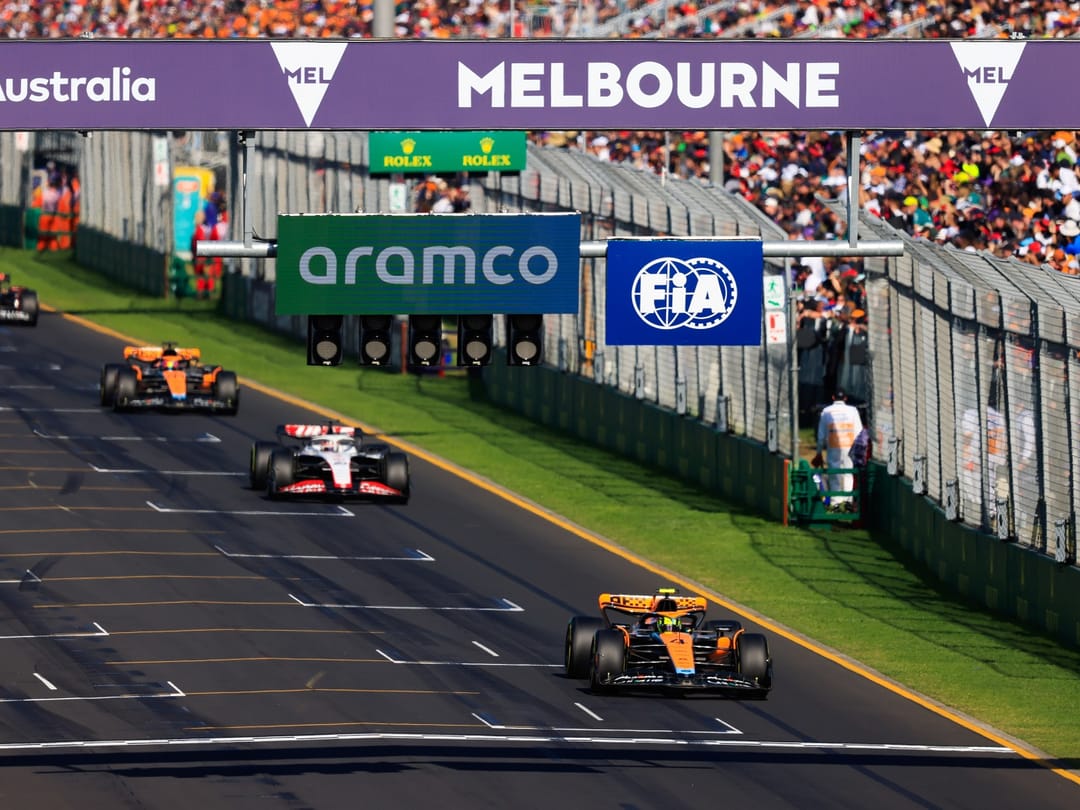

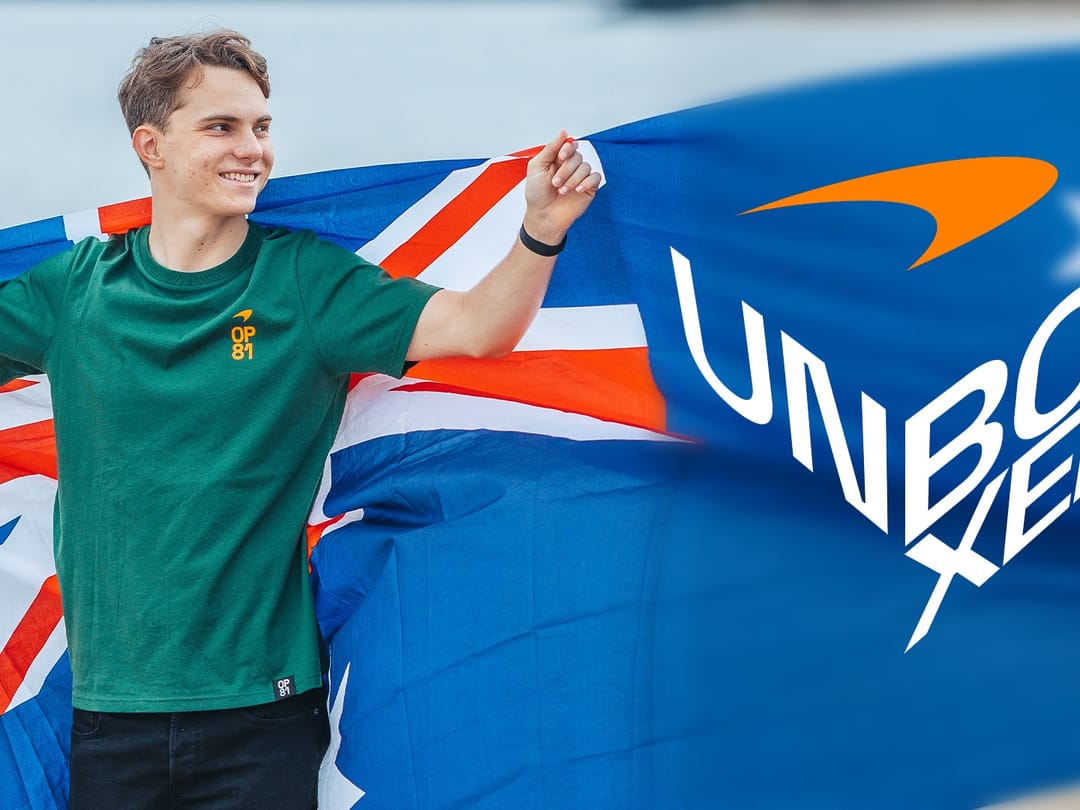

2023 Australian Grand Prix
"Double points for the team is a great result"
They come from the land Down Under
A closer look at drivers from the other side of the world who have made their mark at McLaren
Australia Unboxed
Chaos Down Under
Quiz: How well do you know Oscar Piastri?
How clued up are you on our awesome Aussie ahead of his first home race for McLaren?
Join the team
McLaren Plus is our free-to-join fan loyalty programme, bringing McLaren fans closer to the team with the most inclusive, rewarding and open-to-all fan programmes in F1 & esports.
Sign up now, or current members can amend their details in the form below if necessary.


